
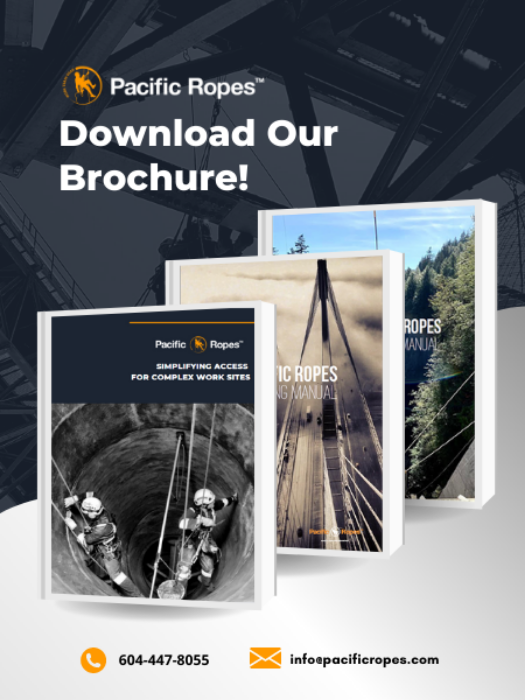
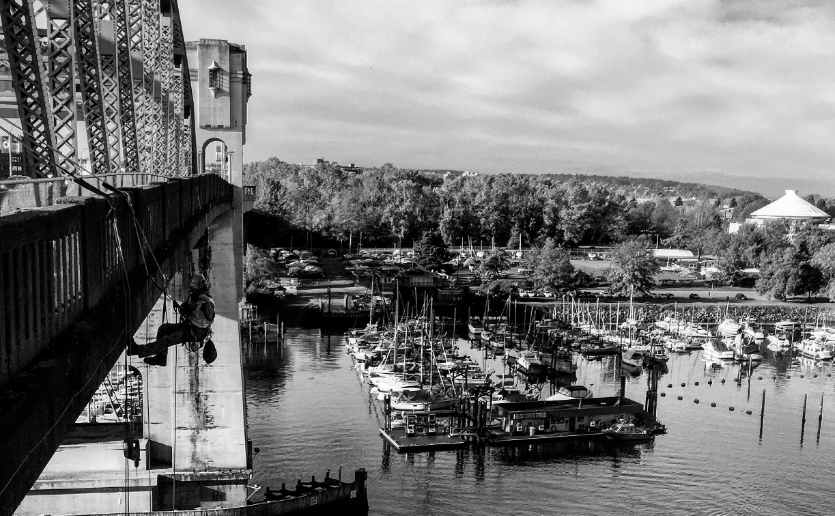
In this case study, we assisted our client by installing a bird netting system under a bridge in preparation for an upcoming rehabilitation project. By using rope access, we were able to install the net without implementing road closures.
Learn More >SPRAT (Society of Professional Rope Access Technicians) is based in America and aims to promote the safe use of Rope Access within our regulatory bodies here in North America. SPRAT training also consists of three levels of certification, which we host every month in BC only. Our methods of teaching aim to lay out the basics as clearly as possible; while inspiring you to problem solve and to be as efficient as possible. Team collaboration is essential for successful Rope Access technicians and we embody that nature within our Rope Access training.
SPRAT Training >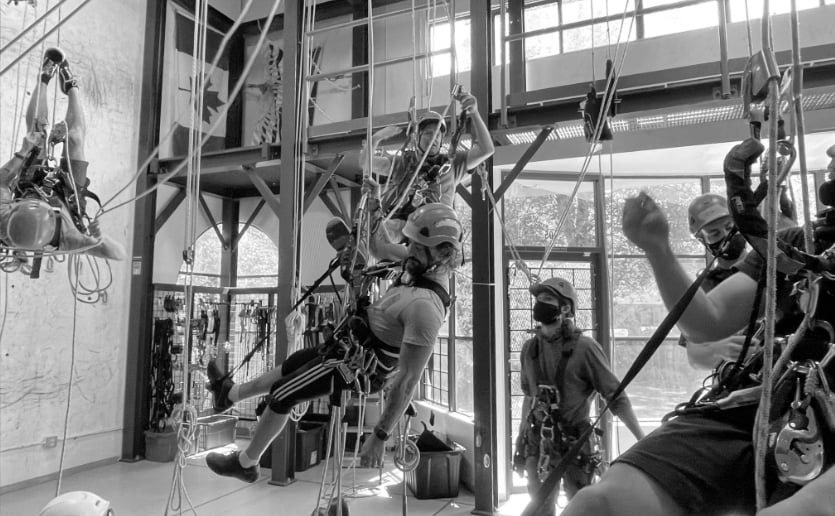
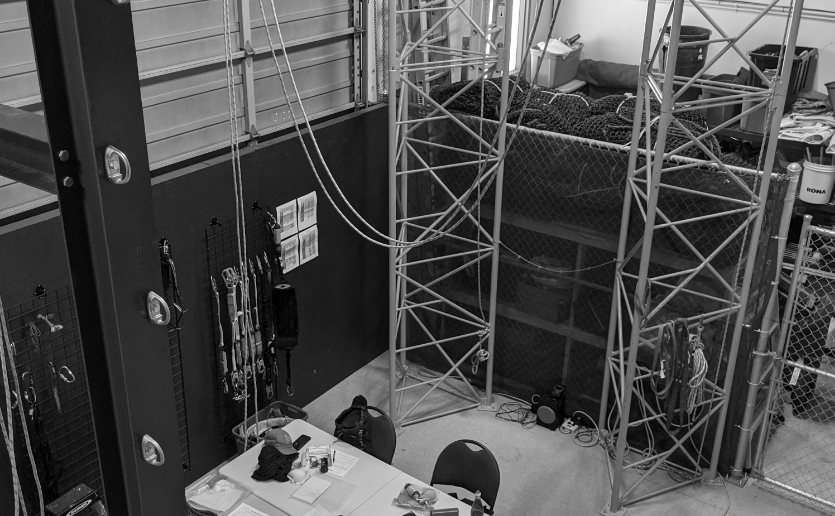
Our Tower and Climbing Rescue program comes in two parts, Climber 1 and Climber 2. Both are in line and approved by STAC (The Structure, Tower and Antenna Council). This course is meant for technicians who have to climb and work on telecommunication towers. Custom and on-site training is available for this course.
Tower Training >Gain competency in the thorough examination of Personal Protective Equipment (PPE). This Petzl course is perfect for individuals who are responsible for equipment and work at height PPE inspections. But, we encourage all technicians to take this course to gain a better understanding of equipment inspection, which ultimately prevents equipment failure on site.
Petzl PPE Inspection >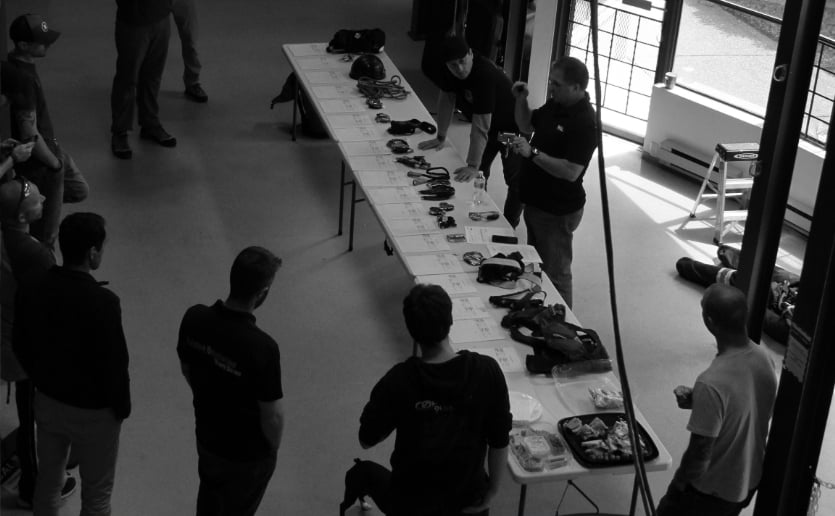
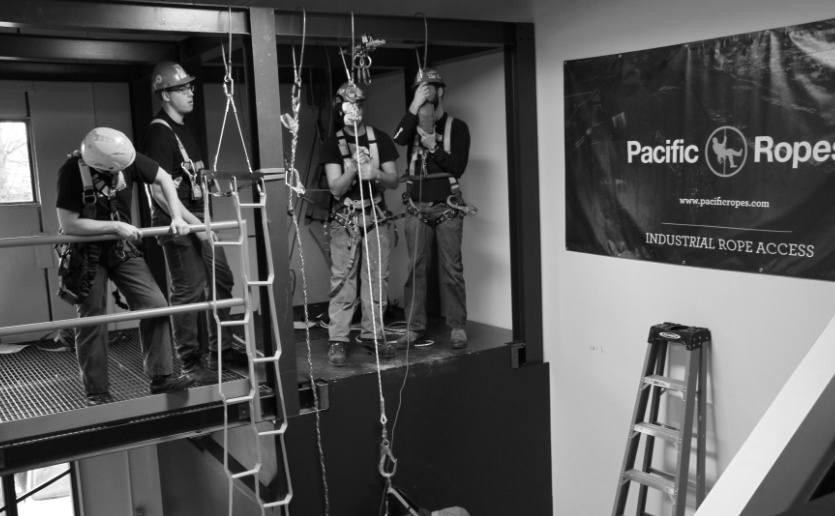
We understand that sometimes you need training for a specific work site or structure. Understanding the rescue procedures, protocols, and equipment for a particular job is important and you may not have someone qualified in-house to run this program. Our training team has helped many companies in this scenario with our custom rescue training. These programs can be completed at our facilities or on site.
Contact us >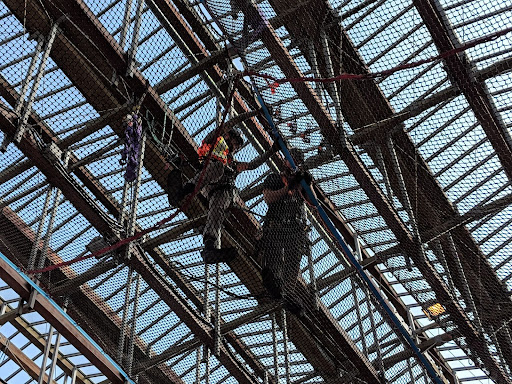
Redefining temporary access for construction, we can provide walkable work platform netting for a variety of work scopes such as inspections, electrical, coatings, surface preparations, pipe insulation, and more. This system is ideal as a cost effective alternative to scaffolding for those hard to reach locations.
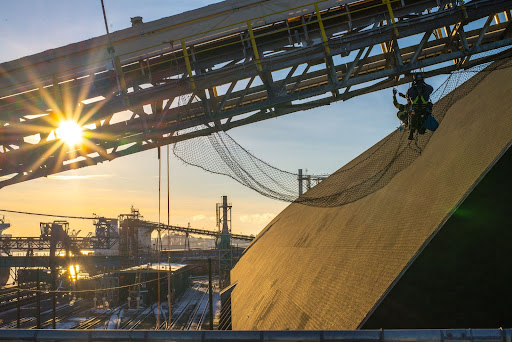
Protecting workers or sensitive locations below. From bridges to busy construction sites, debris netting catches falling debris, and reduces your chance of personal or property claims due to falling objects. We can provide netting options in stainless steel, mild steel, nylon, polyester and more.
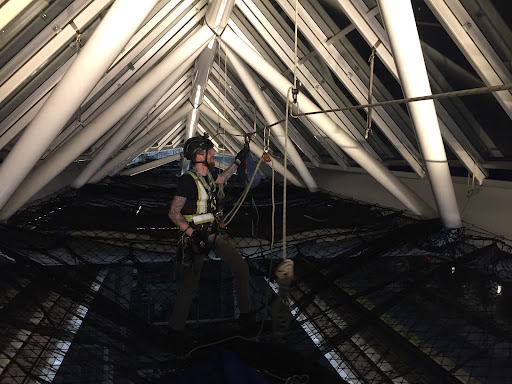
Contain debris and liquid from exiting the work location. Our systems work for a variety of containment needs.
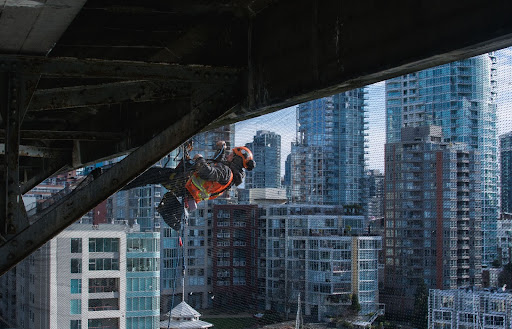
Protect sensitive areas from property damage and eliminate the clean up required to deal with nesting birds. Bird guano can damage coating systems, and provide health hazards to your workforce or the general public. In addition, some work locations require pre-planning the fall before to allow for construction in the Spring without interference from nesting activities.
Based on the concept of “doubling up,” Rope Access is a system consisting of ropes and hardware that are attached to a worker in a full body Rope Access harness. Using trained techniques, the worker can utilize this system to go up, down, and around a difficult work location. In addition to this flexibility, a Rope Access Technician can be supported in suspension at their work location all while avoiding any worksite hazards. Below is an illustrative breakdown of the rope access system.
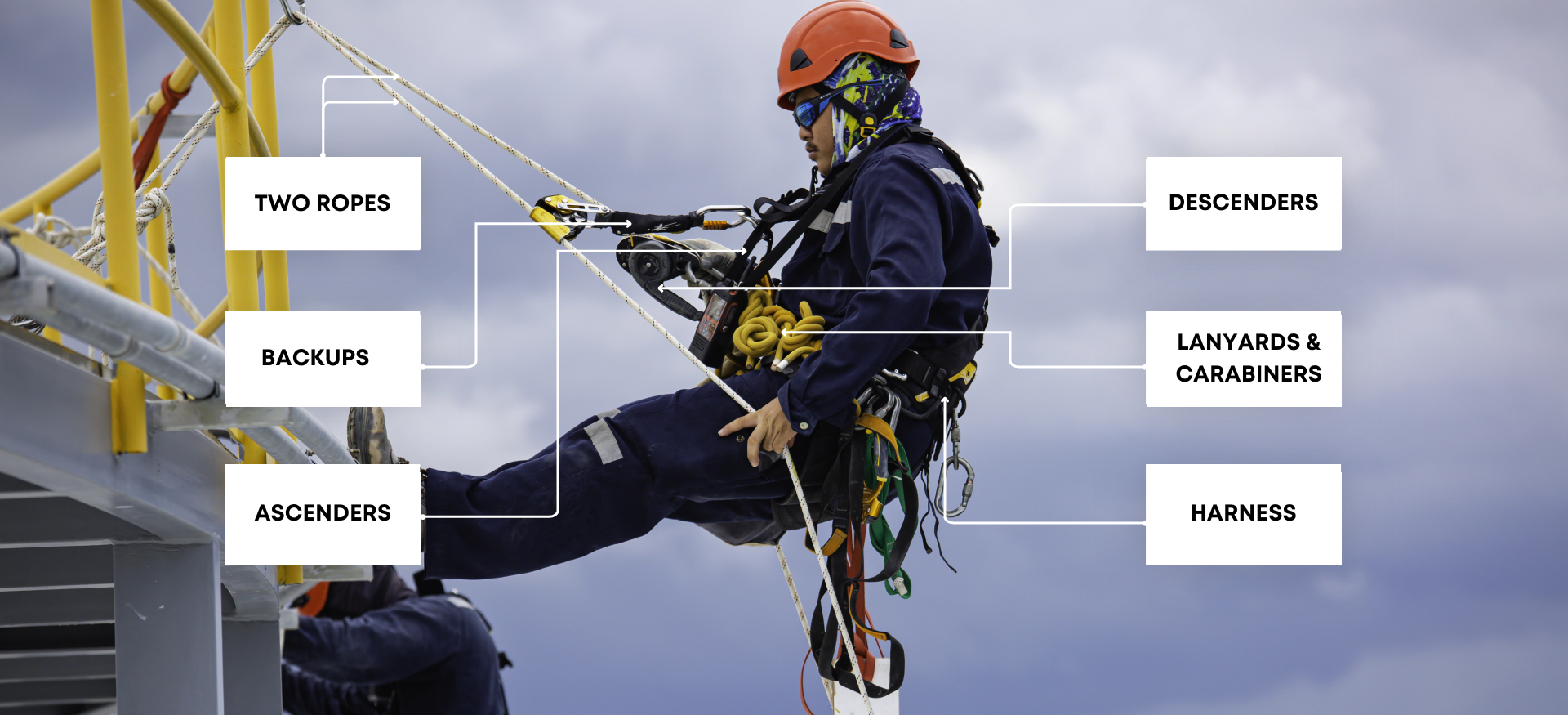
Imagine budgeting a job and being able to reduce scaffolding costs. With rope access, you would be able to eliminate or at the very least, reduce the amount of scaffolding needed.
Think of us like a multi-tool for work at height and confined spaces. Whatever needs to get done, we've got a team who can do it. Check out our services here:
ServicesThere are five components to rope access that each hold their own safety checks and balances in place. Together these five components create a synergy of work at height that is centered around one thing: safety. To read more about these five safety components, click below.
Rope Access SafetyIn Canada, each province differs in how they regulate work at height, including rope access. However, rope access technicians are certified by either IRATA or SPRAT, which are the two rope access associations that have the biggest influence in North America. Companies who choose to use rope access will follow either IRATA or SPRAT regulations. If there are specific rope access regulations within a province, generally, these regulations will defer the specifics back to either IRATA or SPRAT standards.
In Canada, the certifications that are recognized and accepted are IRATA (Industrial Rope Access Trade Association) and SPRAT (Society of Professional Rope Access Technicians). Each certification has three levels that can be obtained. Minimum time experience and rope hours are required before a technician can upgrade to the next level. Each level requires certain amount of days of training and a third party examination. To learn about the different certifications and how training is conducted, please visit our training page!
TrainingDepending on your end goal, it may make more sense to bring in Pacific Ropes as your third party rope access provider or, we can help you build your own rope access team. Or, if can be a combination of both. Contact us to find out more.
Contact usOnce your employee passes their level 1, they will need to work under a L3 rope access supervisor. This requirement is explained in the IRATA and SPRAT regulations, which is reference by provincial regulation in BC and Alberta. But, regulation aside, a level 1 rope tech can maneuver themselves on a rope access system but they do not have the experience or training to be able to perform advance rescues and rigging. Therefore a L3 Supervisor is required on site to manage the overall safety of the rope access work. If you do not have a L3 Supervisor staff member, we can help you hire one through our job postings.
Building internal rope access capability does not have to be complicated. Although there are many details to think about, there are five major areas that you need to consider. IRATA and SPRAT regulation are the guiding documents you need to refer to when putting these five components in place. We also have a Rope Access Management Program that you can utilize to start putting all the pieces in place.
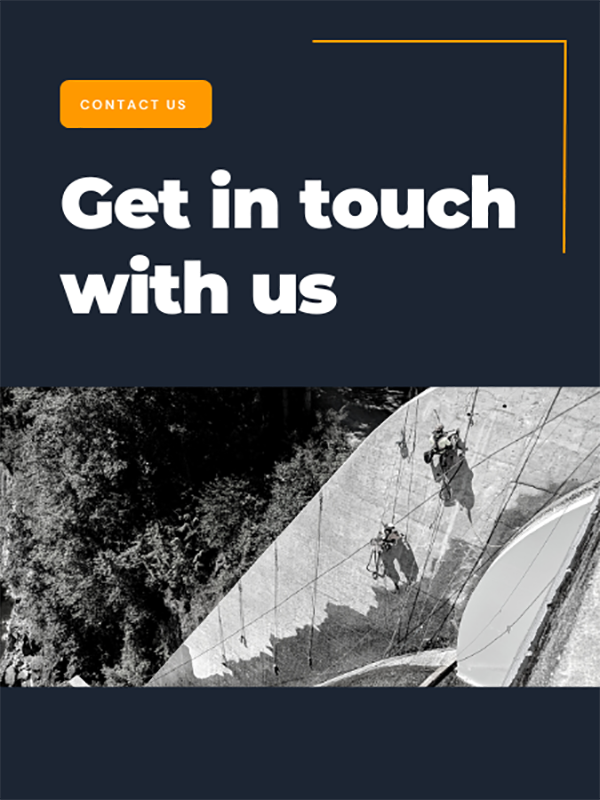
Helping construction and energy industries access hard-to-reach locations with custom work at height solutions

